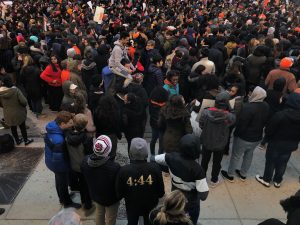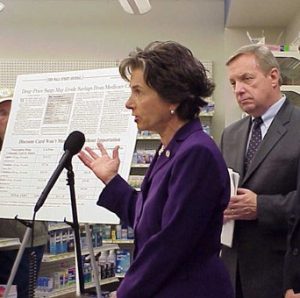If the Chicago Board of Education meeting Wednesday is any indicator, racial tensions in Chicago Public Schools are on the rise. At least six speakers brought up the issue of race and how it has affected them personally and the dynamics of education at their local schools.
One speaker said the Illinois DREAM Act will hurt certain schools, increasing the number of Hispanic students enrolled in predominantly black neighborhoods. A mother of a CPS student called for an investigation, alleging her Hispanic daughter was discriminated against by her white principal. A man spoke out on the importance of having black history taught in schools.
Forty-five percent of CPS’ approximately 410,000 students are black, 41 percent are Hispanic and 9 percent white.
Soraya Zamora, the mother of three CPS students, said she has seen episodes of discrimination at her children’s school, Thomas J. Walters Elementary in Ravenswood – Mayor Rahm Emanuel‘s neighborhood.
“Since they don’t have enough bilingual teachers, some Hispanic students can’t keep up with the teachings and are left behind,” said Zamora. “I’ve seen children being moved to special ed simply because of language issues.”
The school principal, Titia Kipp, could not be reached for a comment.
Hispanic rights advocacy group Latinos United for Educational Priorities, argues that while Latino students represent 41 percent of CPS children, only 16 percent of the district’s 21,320 teachers belong to that ethnicity.
For CPS social worker DeAnna Theodore, who said she doesn’t personally feel racial tensions in her school, Langston Hughes Elementary in Roseland, it’s important that students can relate to their teachers culturally.
“I’m not at all suggesting that one particular race can only act in that capacity for students of the same race,” said Theodore. “I’m simply saying that it is important that we are not just making sure the students are being educated academically but also are equipped with the necessary skills to be able to function in our outside environments and societies.”
The social worker sees a disproportion of resources directed to schools based on their racial demographics. To her, that explains why black and Hispanic children fare worse in tests.
“Our schools that house minority children often times are overlooked when it comes to funding and monies that are distributed to schools city wide,” she said. “I have also noticed that these same children are housed in overcrowded schools and classrooms where there are very few resources if any.”








Be First to Comment